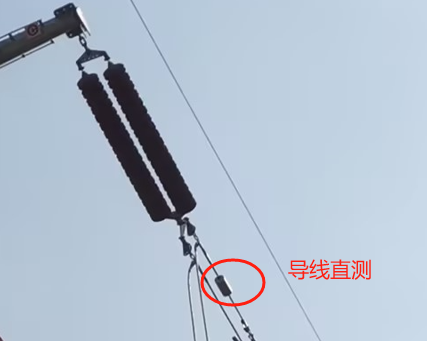Transmission line distributed fault diagnostic system in determining the fault peak, mainly based on the waveform characteristics of the fault traveling wave current and its related parameters, especially the traveling wave half-peak time of this key indicator. The following is Shenzhen Dingxin Wisdom Technology on the transmission line distributed fault diagnostic system (distributed fault location) fault peak judgment based on a clear summary:
I. Lightning strike fault peak judgment basis
1. Waveform characteristics:
Lightning fault, due to the direct shunt and tower grounding reflection reasons, the fault traveling wave current flowing through the line is therefore different superposition, traveling wave superposition will make the peak value of the rapid attenuation, wave tail time becomes shorter.
2. traveling wave half-peak time:
Lightning fault current traveling wave half-peak time is generally less than 50 μs, the actual monitoring is often less than 50 μs, this shorter half-peak time is one of the important basis for judging the lightning fault.
Second, non-lightning fault peak judgment basis
1. Waveform characteristics:
When the line occurs tree barriers, hill fires, dirt, foreign objects and other non-lightning strike ground fault, the fault traveling wave current flowing through the line for the grounding instantaneous frequency voltage generated by the step response, its peak decay is more slowly, the wave tail is longer.
2, traveling wave half-peak time:
The traveling wave half-peak time of a non-lightning strike fault is generally greater than 20μs, and this longer half-peak time contrasts with that of a lightning strike fault.
III. Synthesis of judgments
Data comparison: The system compares and analyzes the measured data with the preset thresholds by real-time monitoring and recording the waveform characteristics of the faulty traveling wave current, especially the traveling wave half-peak time.
Intelligent Algorithms: Using built-in intelligent algorithms and models, the collected data is quickly processed and analyzed to accurately determine the type of fault (lightning strike or non-lightning strike).
Results display: Diagnostic results are displayed to O&M personnel in various ways such as Web page, SMS, etc., including detailed information such as fault time, fault location, voltage level, cause of fault, faulty tower, etc., which provides powerful reference for O&M personnel.
The above is Transmission Line Distributed Fault Diagnostic System for the characteristics embodied in each type of data peaks as the "fault diagnosis" judgment basis introduction. "Fault diagnosis" judgment based on the introduction, I hope to help you. At present, our distributed fault diagnosis system for transmission lines has realized trouble-free operation in many cities and regions, with high online rate and good feedback.





